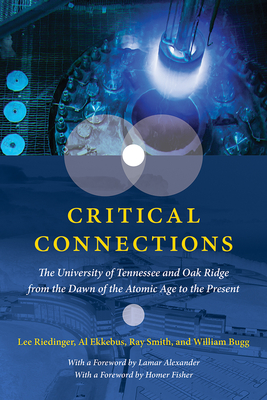
Riedinger, Lee
product information
description
a chain of events that included the race to beat German scientists to build the atomic bomb. A tiny hamlet tucked away in the southern Appalachians proved an unlikely linchpin to win the race. The Manhattan Project required the combination of four secret sites--Clinton Laboratories, Y-12, K-25, and S-50--75,000 workers, and the nation's finest scientists to create the Secret City, Oak Ridge. From the beginning, the effort was aided by the nearby University of Tennessee, which provided expertise to make the weapon possible. Following World War II, it was not clear what role this huge research and development program would play, but pioneering scientists and administrators were determined that one option--dismantling the whole thing--would not happen. Critical Connections chronicles how Oak Ridge National Laboratory (ORNL), the Y-12 National Security Complex, and their partners became outstanding examples of the military-industrial-educational complex from the Cold War to the present day. At the beginning of the 1950s, Oak Ridge became a flourishing, less-secret city, and the authors show how, decade by decade, ORNL became the source of major breakthroughs in physics, biology, computing, and other fields--and how these achievements required ever-closer connections with UT. By the mid-1990s, after many successful joint initiatives between UT and ORNL, UT was poised to compete to become the manager of ORNL. In 2000, UT-Battelle LLC won the bid from the Department of Energy: UT was charged with providing scientific direction and key personnel; its partner Battelle would oversee ORNL's operations and chart its technology direction. The authors highlight the scientific developments these connections have brought, from nanotechnology to nuclear fission, from cryogenic experiments on mice to the world's fastest supercomputer. The partnerships between a university, a city, and federal facilities helped solve some of the greatest challenges of the twentieth century--and point toward how to deal with those of the twenty-first.
member goods
No member items were found under this heading.
Return Policy
All sales are final
Shipping
No special shipping considerations available.
Shipping fees determined at checkout.







